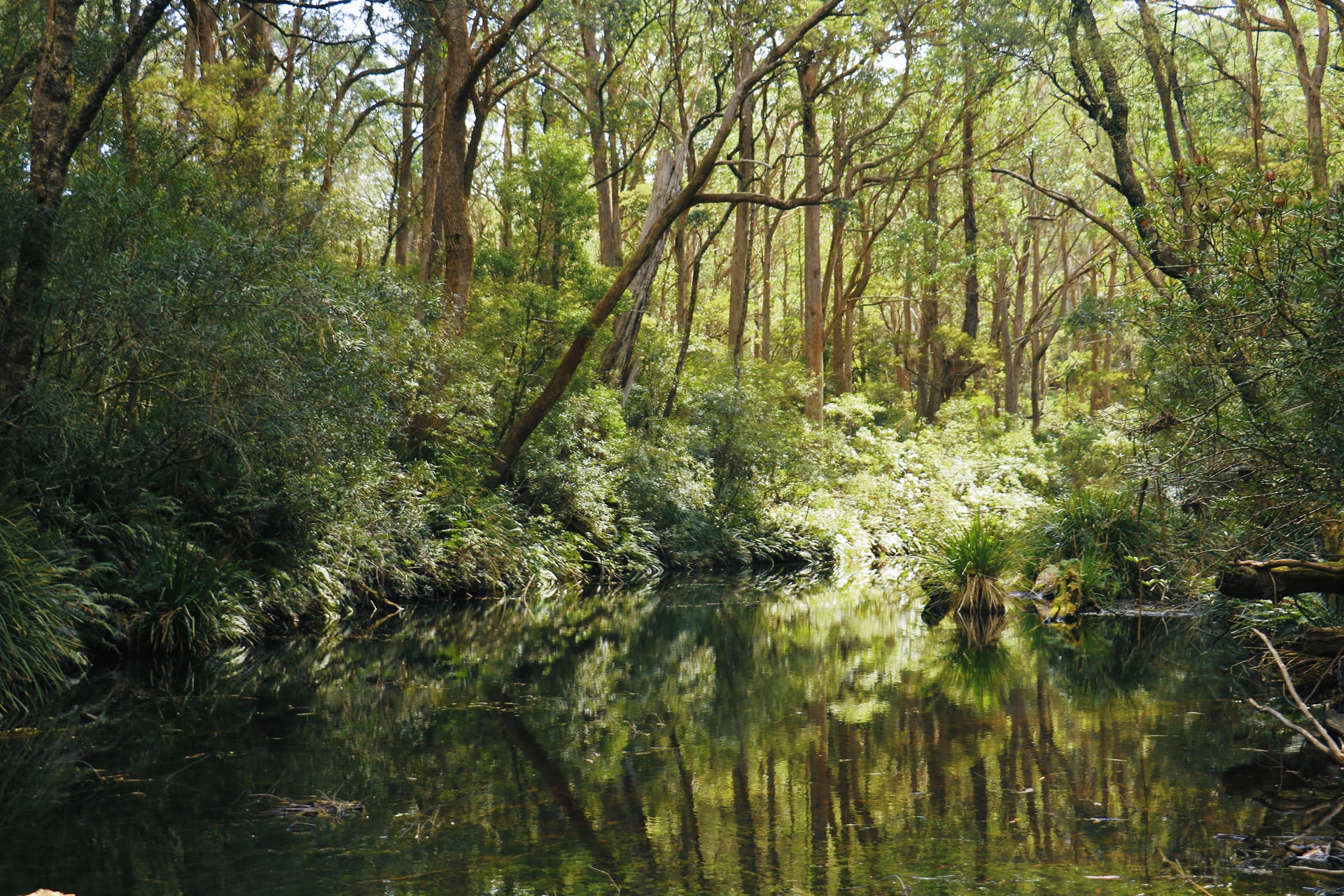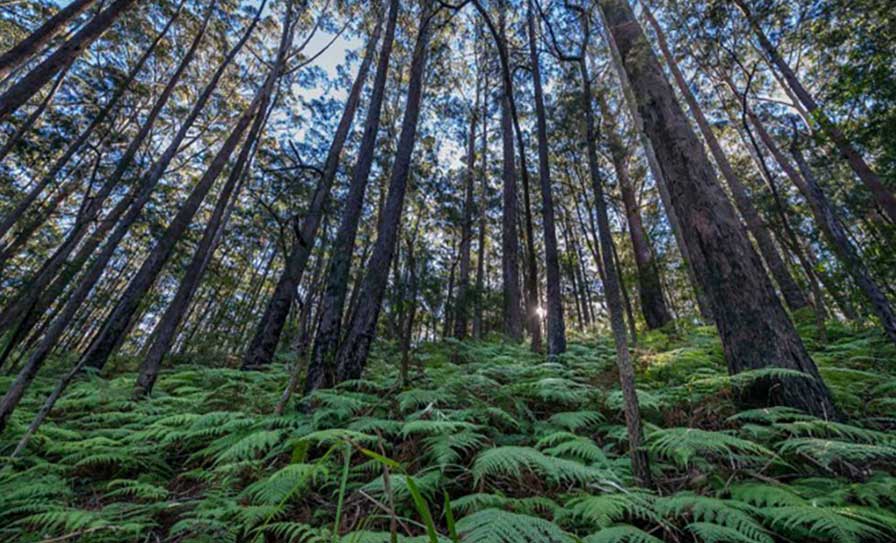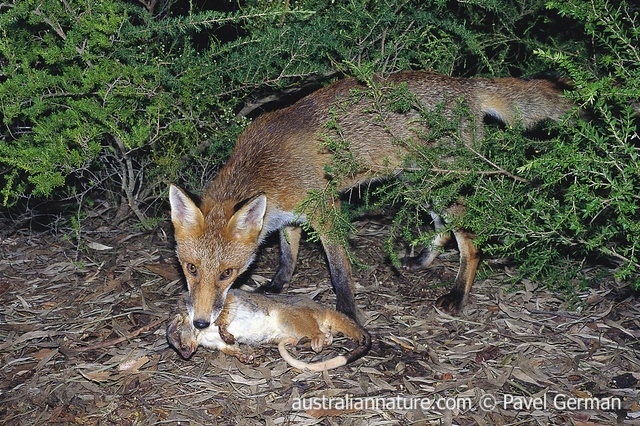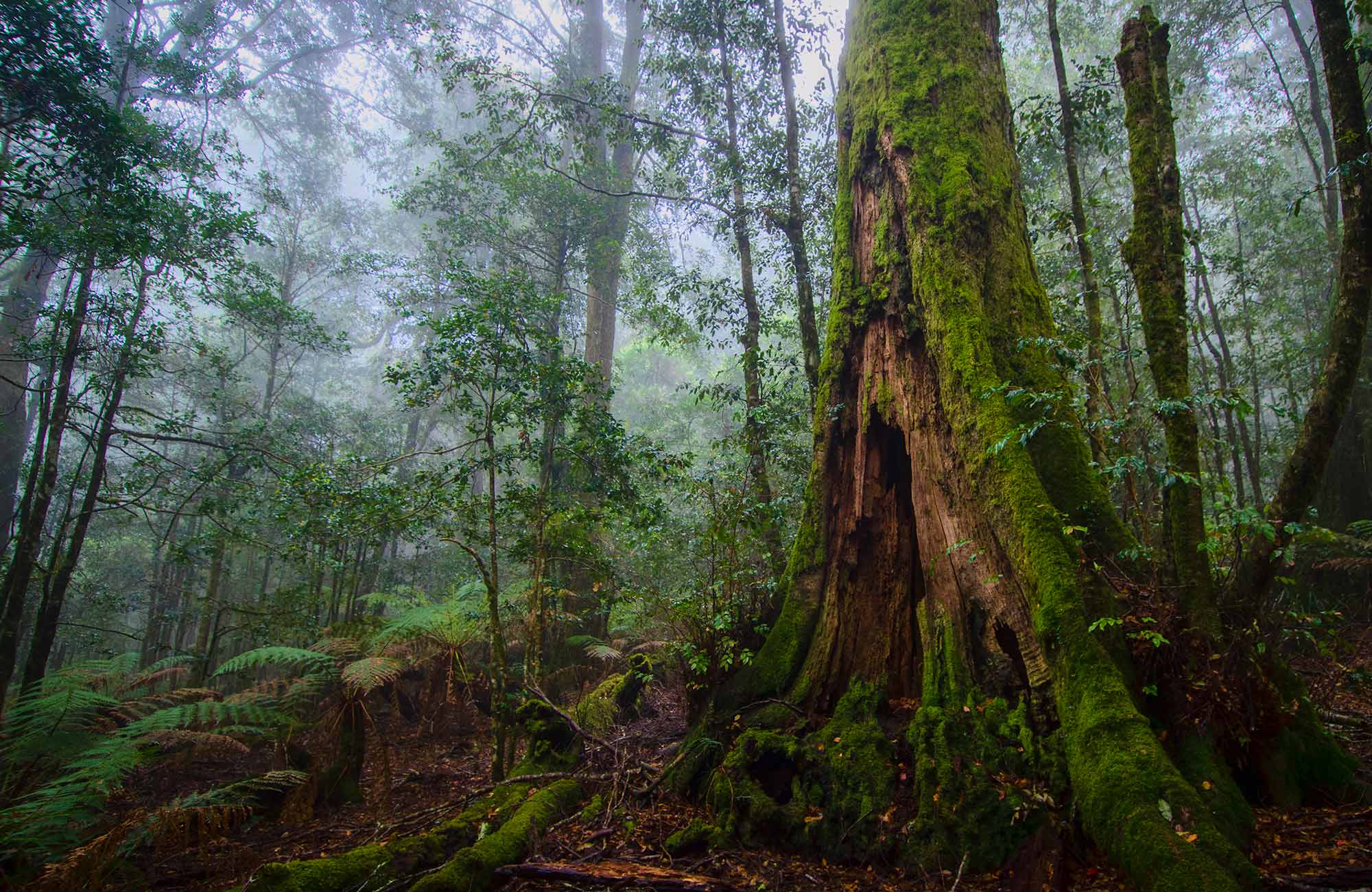FOREST MANAGEMENT
With the loss of Aboriginal forest management across Australia during the 19th century, historical evidence has revealed a change in the structure and species composition of large areas of Australia’s native forests.
The forests and woodlands that have not been cleared for agriculture or urban development now carry a denser under-storey and a greater number of trees, than was typical in forests that existed prior to European settlement.
An increasing frequency of large scale wild fires, as well as the harvesting of forests for a range of forest products, has also contributed to a reduction in the average size and number of mature trees and an increase in area of relatively dense regrowth of various ages.
As concerns are raised about the changing biodiversity and decline in populations of icon species across both public and private land, it is becoming more obvious that regardless of land tenure, active forest management is required to maintain biodiversity. Threats to biodiversity, including introduced predators and herbivores, high fuel loads leading to repeated high intensity bushfires and invasive weeds must be actively managed at a landscape scale.
NSW Upper House Committee Inquiry into the Sustainability of the Forest Industry
On Monday afternoon, 4 April, SETA members, with forest industry representatives and a local forest scientist briefed the Committee on a range of forest resource, fire management and biodiversity issues.
On Tuesday, written submissions and verbal evidence was presented to the inquiry at Moruya. The documents below were tabled and provided advice on a range of issues that needed to be addressed, to provide sustainable forest management, to underpin a sustainable forest industry.
INTRODUCTION TO FOREST MANAGEMENT SUBMISSIONS
South East Timber Association Comments on the Proposed Monitoring Program for the Coastal Integrated Forest Operations Approval
The South East Timber Association (SETA) understands the political issues associated with the harvesting of native forest in NSW. Decades of activist charity campaigns, with much false and misleading content, has ingrained a view that harvesting of native forests is the biggest threat to biodiversity within native forests. Consequently. the Coastal IFOA monitoring program is being implemented ahead of a cross tenure forest monitoring, which needs to be established as soon as possible.
South East Timber Association to the NSW Environment Protection Authority (EPA) Draft Regulatory Strategy
Recommendation 1
It is recommended that oversight of development of future native forest legislation, regulation and codes or environmental operations manuals be undertaken by an agency that has staff with high level understanding of native forest ecological processes and an understanding of active and adaptive management principles.
Recommendation 2
It is recommended that the NSW Government transfer responsibility for regulation and enforcement of all native forest harvesting on public and private land to another agency, such as the Department of Primary Industries.
South East Timber Association Submission to the Victorian Environmental Assessment Council Central West Investigation
It is unfortunate that VEAC has not recognised that some of the underlying principles established by the Joint ANZECC/MCFFA NFPS Implementation Sub-Committee (JANIS), which continue to drive “protection,” are rooted in the myth of terra nullius.
So called “high quality wilderness” is actually an artefact of European neglect, rather than the maintaining the pre 1750 distribution of each forest type, which were actively managed by Aboriginal people. Consequently, much of the conservation reserve system seeks to preserve slabs of land covered by native vegetation, altered in structure and in places, species composition.
SETA does not accept that VEAC should blindly follow the terms of reference, unless that outcome is more to do with the politics of conservation, rather than genuine conservation outcomes.
South East Timber Association Submission to The Renewal of The NSW Regional Forest Agreements
In the past 20 years, there has been a massive increase in forest fuel loads, so it is only a matter of time before devastating fires will impact south east NSW forests, unless there are significant reductions in forest fuel loads.
SETA is concerned by the loss of firefighting capacity with the wind down in the timber industry and forest service over the past 20 years. The reduction in capacity has been further exacerbated by the recent National Parks and Wildlife Service restructure.
South East Timber Association Submission to the Renewal of The Victorian Regional Forest Agreements
Monitoring of threatened and other species in advance of harvesting operations has added significantly to the understanding of threatened species numbers and distribution in state forests.
There are concerns that protection and monitoring of threatened species in parks and reserves do not consistently meet the standards applying to state forests. Where information is publicly available, it reveals the levels of protection that the general public expect of our parks and reserves are not being delivered.
South East Timber Association Submission to Future of Victorian Forests
This survey is constructed in the way of a popularity contest, rather than a survey to properly inform government priorities and policy. There is no distinction made between forests in the conservation reserve system and multiple use state forests.
To protect and improve the forests, all forests must have active and adaptive management, that recognises Australian ecology has evolved under active Aboriginal management for tens of thousands of years. The current forest ecology and wilderness views are an artifact of 200 years of European neglect, which continues to promote a terra nullius view of the Australian continent.
South East Timber Association Submission to the Inquiry Into Ecosystem Decline in Victoria
The impacts of more than 230 years of development, on Victoria’s natural environment, are most obvious in urban areas, where permanent removal of native vegetation has occurred across the majority of the affected landscape. In the broader landscape, agricultural development, electricity supply, water storage and mining, among many other activities, has also had significant impacts on the natural environment.
However, much more insidious factors are having a wide-reaching impact on Victoria’s biodiversity and some legislation and public land management practices are aiding ecosystem decline.
SETA Submission to the Inquiry into the Long-Term Sustainability and Future of the Timber and Forest Products Industry
Given the interconnective relationship of forests across the landscape, sustainable forest management must be viewed across on both public and private land, including the conservation reserve system. Sustainable forest industries must have a sustainable land base.
Since the “Comprehensive, Adequate and Representative (CAR) Reserve System was established as part of the Regional Forest Agreement (RFA) process, there has been an ongoing erosion of the State Forest land base available for timber production. Reservation levels of NSW tall forests, under the RFAs exceeded international benchmarks.
Researchers are sounding the alarm on a topic not often discussed in the context of conservation — misinformation. The team explain how the actions of some scientists, advocacy groups and the public are eroding efforts to conserve biodiversity.
Robust science depends on encouraging and incentivising more open and transparent practices in research – now, metascientists are looking at what works and what doesn’t.
SETA SUBMISSIONS & COMMENTS
INTRODUCTION TO FOREST RESEARCH AND ECO POLITICS
Do Peer-Reviewed Scientific Journals Really do their Job?
Over recent years, internationally, there has been an increase in the number of commentators questioning the sanctity of the Peer Review Process and the quality of some published science.
Misinformation, polarization impeding environmental protection efforts
Researchers are sounding the alarm on a topic not often discussed in the context of conservation — misinformation. The team explain how the actions of some scientists, advocacy groups and the public are eroding efforts to conserve biodiversity.
Science needs to look inward to move forward
Robust science depends on encouraging and incentivising more open and transparent practices in research – now, metascientists are looking at what works and what doesn’t.
SETA SUPPORTING ARTICLES FOR FOREST RESEARCH & ECO POLITICS
Private Native Forests
Looking out to 2030, what do you think are the major opportunities for expanding farm forestry in Australia?
The Federal environmental framework needs reform, to recognise that active and adaptive management of native forest, including the use of a reasonable proportion for timber production, can deliver superior environmental outcomes than lockup and neglect E zoning. Active management of forest fuel levels with low intensity planned fire needs to be facilitated to allow farmers to mitigate risk of high intensity bushfires damaging the economic and environmental values of their properties.
South East Timber Association on the Private Native Forestry Codes of Practice for NSW
South East Timber Association (SETA) members advocate for policies that allow for active and adaptive management of native forests on both private and public land. SETA expects government policies and practices will maintain environmental values in the long term. policies and practices will maintain environmental values in the long term.
South East Timber Association Submission on the Snowy Monaro Regional Council (SMRC) Settlements Strategy

South East Timber Association (SETA) members advocate for policies that allow for active and adaptive management of native forests on both private and public land. SETA expects government policies and practices will maintain environmental values in the long term. This submission will focus on the private native forest estate in the SMRC area.
SETA SUPPORTING ARTICLES FOR PRIVATE NATIVE FORESTS
Using Low Intensity Burning to Restore Healthy Native Forests
For more than 20 years, the area of forest in southern Australia states, subject to regular mild burning has declined. Activists who subscribe to a wilderness belief, underpinned by an unconscious acceptance that terra nullius applies to the Australian continent, actively campaign to eliminate human initiated low intensity burning from the Australian bush
By choosing to deny the use of fire by Aboriginal people across the Australian continent for tens of thousands of years, these activists and complicit politicians and bureaucrats are inflicting perverse outcomes on our native forests and associated biodiversity. Aside from the incidence of high intensity wildfires, chronic forest decline now affects millions of hectares of native forest across Australia.
The following article provides historical context to the use of fire by Aboriginal people, examples of the impact of the loss of regular low intensity burning and what needs to be done to restore forests to a more fire safe and healthy condition.
Regional Forest Agreements
The Regional Forest Agreement renewal process has stimulated a fresh round of outrage from activist charities that seem more focused on using the process as a fund raising opportunity, rather than looking at the biodiversity outcomes across state forest used for timber production and the outcomes from the greatly expanded conservation reserve system. The following submission looks at opportunities for improved biodiversity outcomes from all public native forests.

Management of Travelling Stock Reserves
Travelling Stock Reserves (TSRs) are parcels of Crown land reserved under legislation for use by travelling stock. According to the Local Land Services website, LLS is responsible for the care, control and maintenance of almost 500,000ha of TSRs in NSW. The LLS has published a draft planning framework for TSRs.
Given the important ecological roll TSRs play in agricultural landscapes, the submission below, has been made by Vic Jurskis to the General Purpose Standing Committee No. 5, that will review the Primary Industries, Land and Water budget. The committee has the opportunity to question the Minister for Primary Industries and department staff on how money will be spent.
Predator Control
A face book post by a couple, who care for orphaned and injured native animals, was recently brought to the attention of the South East Timber Association. The carers had found a swamp wallaby, which had unfortunately been caught in a wild dog trap. Despite the care given to the wallaby, she and her joey died. The post unleashed a string of abusive comments about hunters.
Given the response to this sad incident, the post begs the question as to why there is not a torrent of abuse against vehicle drivers who take a daily toll on wallabies, wombats, kangaroos and a wide variety of less common species. A series of questions raised by Greens Party NSW Upper House Member Mehreen Faruqi also brings attention to the Greens Animal Welfare policies and the potential for these policies to allow predators to inflict carnage on our native fauna.


